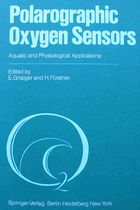Hitchman 1983 POS Calib
| Hitchman ML (1983) Calibration and accuracy of polarographic oxygen sensors. In: Polarographic Oxygen Sensors. Aquatic and Physiological Applications. Gnaiger E, Forstner H (eds), Springer, Berlin, Heidelberg, New York: 18-30. |
»
Hitchman ML (1983) Springer
Abstract:
A membrane-covered polarographic oxygen detector, or polarographic oxygen sensor (POS) as it is called here, is an electrochemical device in which the steady-state current at the working electrode (the cathode) is, in the ideal case, linearly proportional to the concentration, or more strictly the activity, of oxygen in contact with the external surface of the membrane. This proportionality is most simply expressed by the equation originally derived by Mancy et al. [15]:
I1 = nFAPmcs/zm, (1)
where the symbols are defined in the discussion below. According to this equation, a plot of detector current, I1 , against oxygen concentration, cs, will be linear with a slope of nFAPm/zm. This slope can be regarded as the calibration factor for the sensor.
Labels:
HRR: Theory
DatLab, POS 1983


